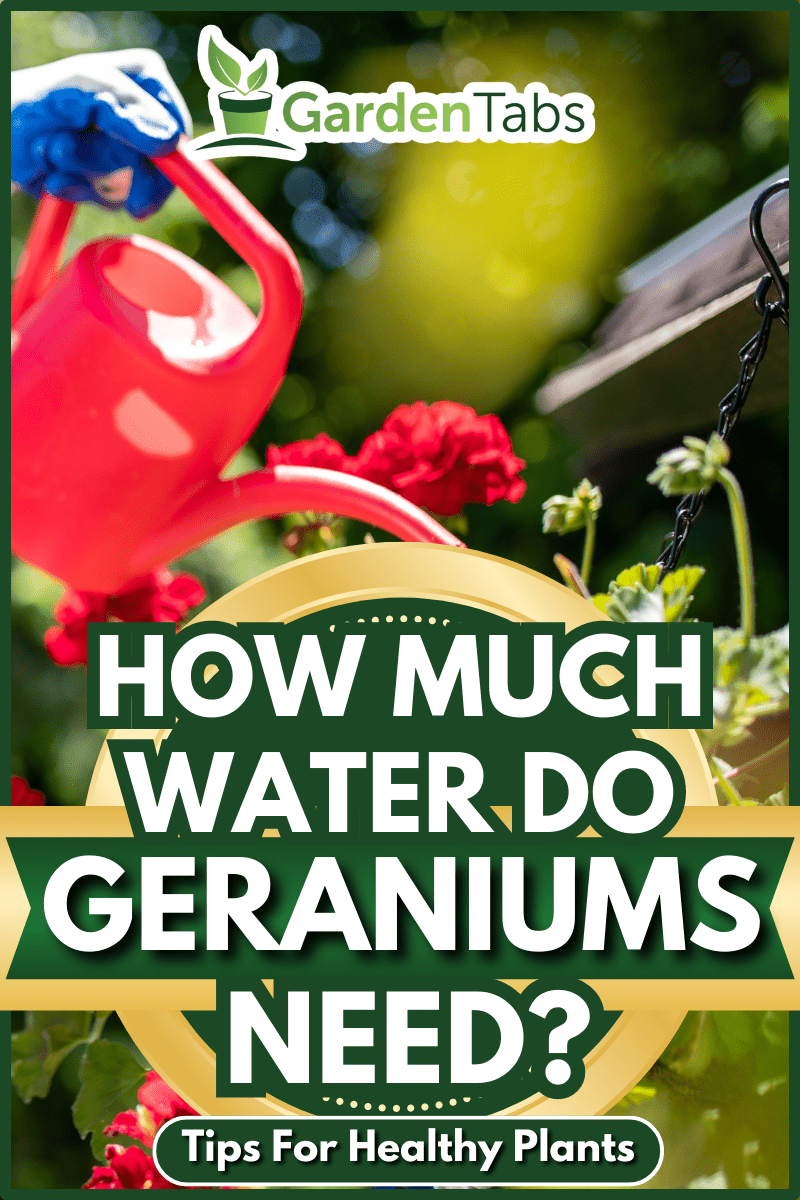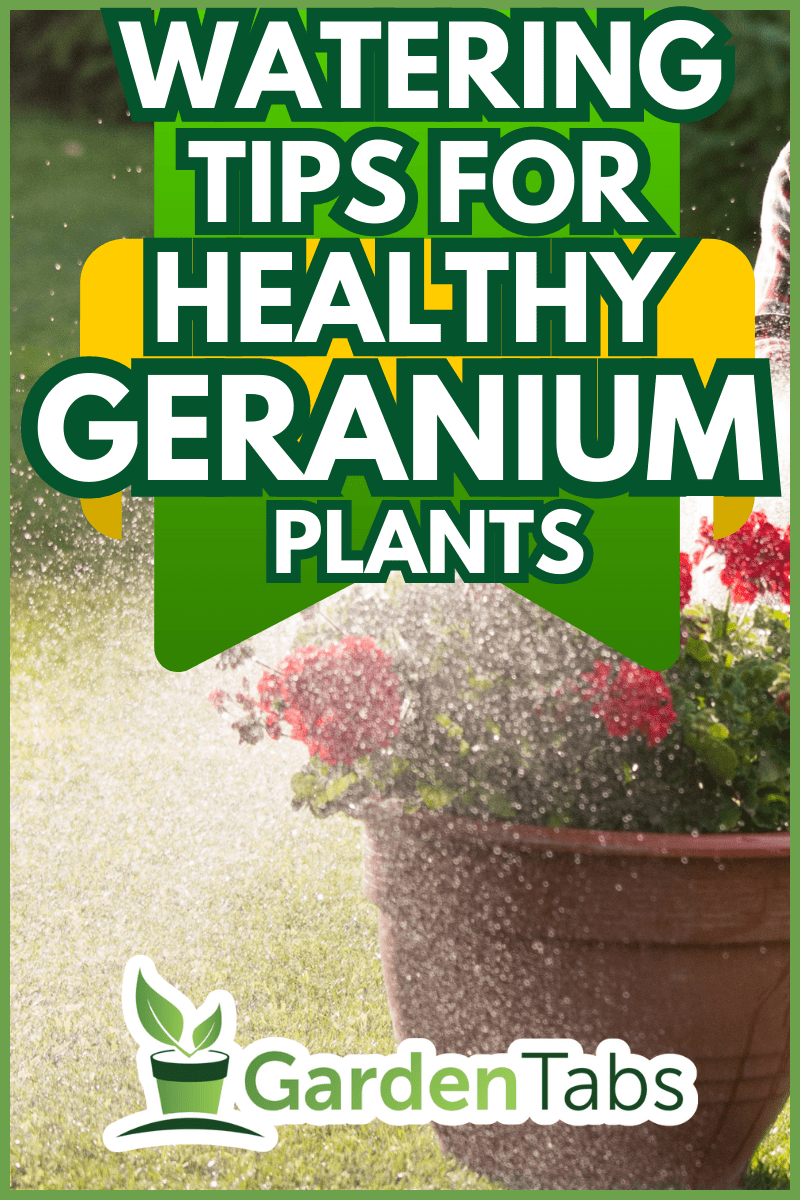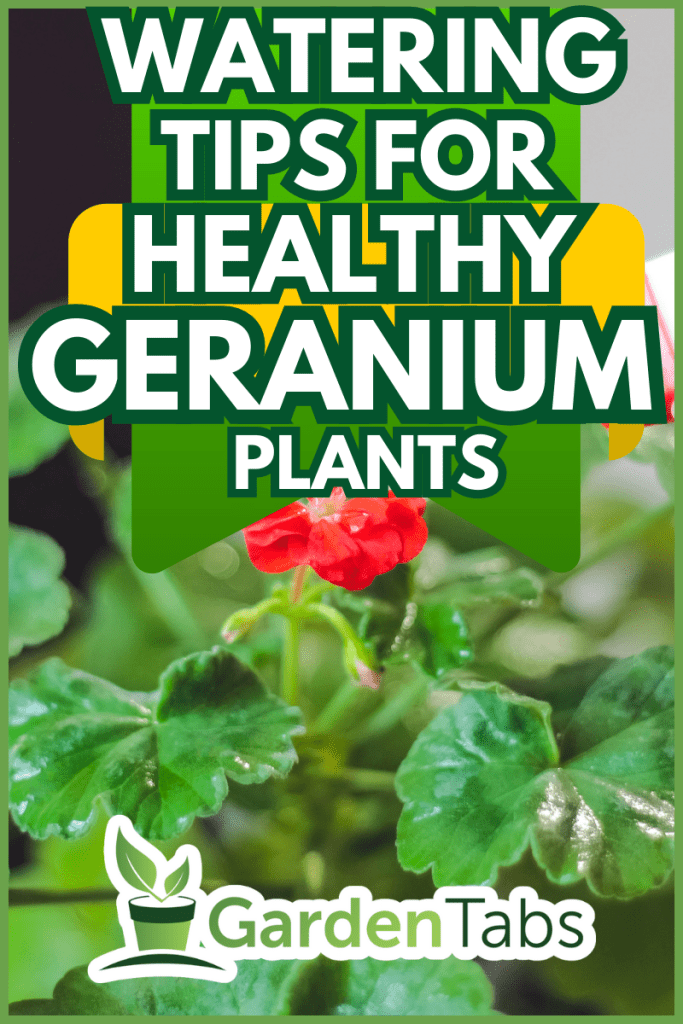Are you tired of watching your geraniums wilt and wither despite your best efforts? Don't give up!
The secret to keeping these flowering plants healthy and thriving lies in providing the right amount of water.
In this article, we'll share watering tips for geraniums so that your plants stay vibrant all season.

Geranium Watering Needs

Geraniums are a popular flowering plant that can add a splash of color to any garden or indoor space. Two common types are the zonal geranium and the ivy geranium.
One of the most important aspects of caring for geraniums is understanding their watering needs.
Geraniums typically require moderate amounts of water and can be sensitive to both overwatering and underwatering.
As a general rule, it's best to water geraniums deeply but infrequently, allowing the soil to dry out slightly between waterings.
The exact watering needs of your geraniums will depend on a variety of factors, including the type of geranium, the size of the container or planting area, and the climate in your area.
Geraniums planted in containers tend to require more frequent watering than those planted in the ground, as containers can dry out more quickly.
To determine when your geraniums need water, check the soil moisture level by sticking your finger about an inch into the soil. If the soil feels dry at this depth, it's time to water.
Factors Affecting Geranium Watering Needs
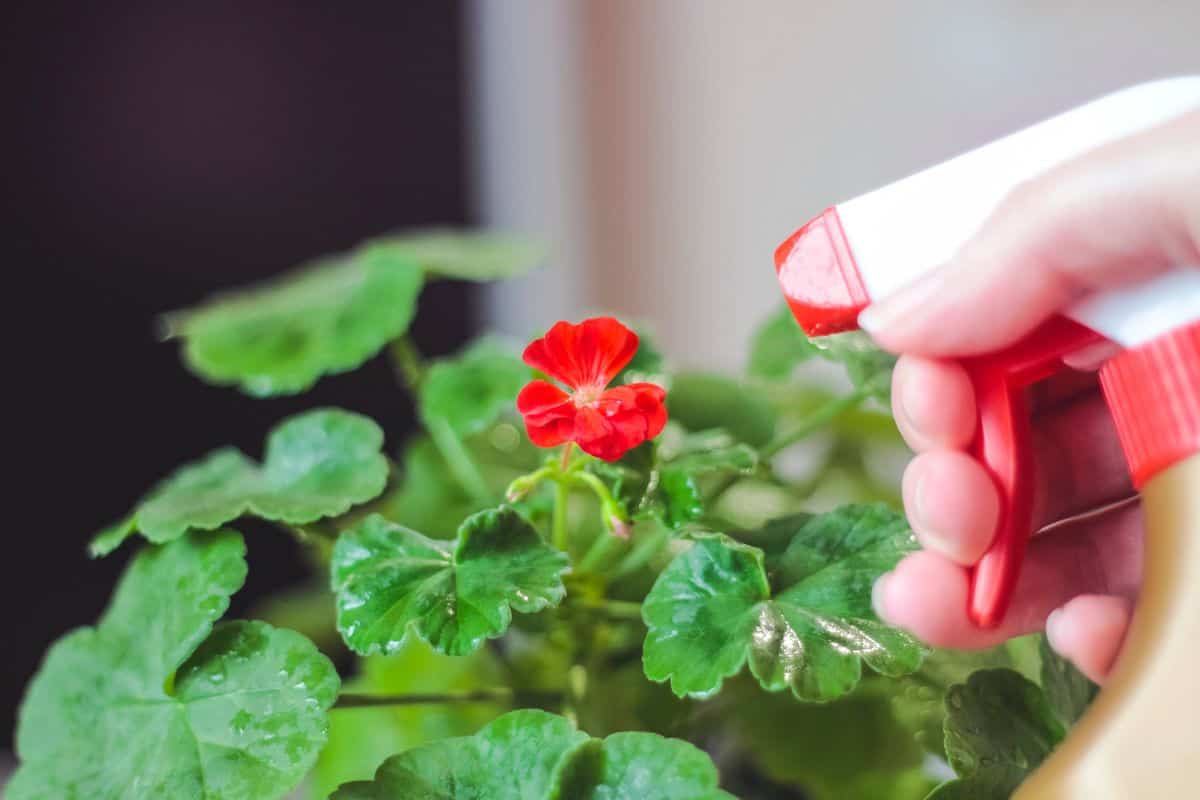
Humidity
Humidity levels play a crucial role in determining how often you should water your geraniums.
In areas with low humidity, you may need to water your plants more often to prevent the soil from drying out.
Conversely, you may need to reduce the watering frequency in areas with high humidity to avoid overwatering.
Temperature
The temperature also affects the watering needs of your geraniums.
During hot weather, geraniums may require more frequent watering to prevent the soil from drying out. Geraniums may need less water when temperatures are cooler.
It is essential to monitor the temperature and adjust your watering schedule accordingly.
Soil Type
The type of soil you use for your geraniums also affects their watering needs.
Soil that is more porous, such as sandy soil, drains water more quickly and may require more frequent watering.
In contrast, soil that is heavy and clay-like retains water for longer periods and may require less frequent watering.
By considering these factors, you can ensure that your geraniums receive the right amount of water to thrive.
Tips for Watering
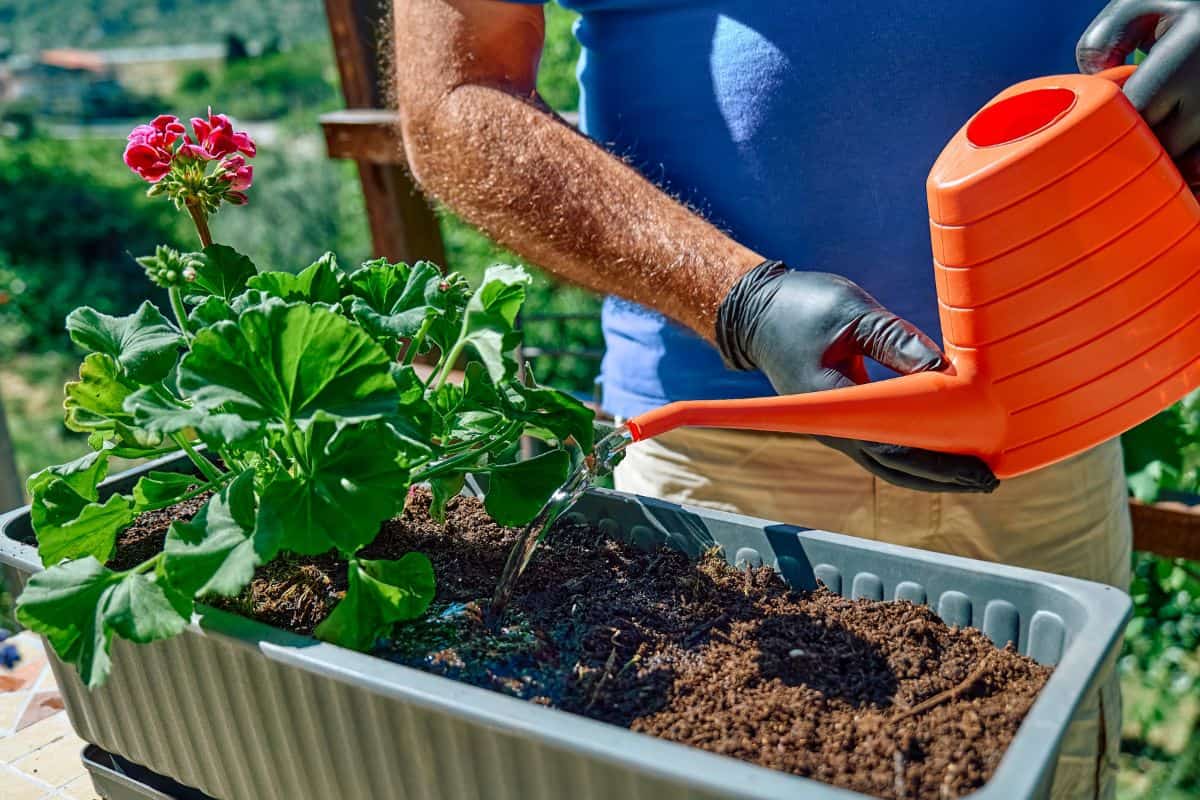
Try to avoid getting water on the leaves. Wet, waterlogged leaves can lead to disease and other issues.
Instead, water the soil around the base of the plant. Take care not to disturb the soil or damage the plant's roots.
In addition, avoid watering geraniums in the evening or at night, as this can promote fungal growth.
You should water in the morning or early afternoon, giving the plant enough time to dry before nightfall.
Watering Tools
Using the right tools can make watering geraniums easier and more effective.
A watering can with a long spout can help you reach the soil around the base of the plant without getting water on the leaves.
Check out this long spout watering can on Amazon.
A hose with a gentle spray nozzle can also be useful, especially for larger garden beds.
Get this adjustable pressure nozzle on Amazon.
You can use a moisture meter to determine when your geraniums need watering. This handy tool can give you an accurate reading of the soil moisture level, helping you avoid over or underwatering.
Check out this moisture meter on Amazon.
Too Much or Too Little Water?
Watering geraniums can be tricky. Too much or too little water can cause harm to the plant. Here are some signs to look out for to determine if your geraniums are being overwatered or underwatered:
Signs of Overwatering
- Yellowing leaves
- Drooping or wilting leaves
- Root rot
- Mushy or soft stems
- Edema (when roots take up more water than they can utilize)
If you notice any of these signs, make sure to cut back on watering and check the soil for proper drainage.
Signs of Underwatering
- Dry or crispy leaves
- Wilting or drooping leaves
- Stunted growth
- Pale or yellowing leaves
- Dry soil
It's important to note that some of these signs can also be caused by other factors, such as pests or diseases.
If you're unsure about the cause of the problem, it's best to consult a gardening expert or do further research.
The bottom line: if your plants are getting dry, you should water them more frequently.
More Tips for Healthy Geraniums
Provide Adequate Sunlight
Geraniums require at least 6 hours of direct sunlight each day to thrive.
Place them in a spot that receives plenty of sunlight, such as a south-facing window or a sunny outdoor location.
Fertilize and Prune Regularly
Geraniums benefit from regular fertilization, especially during the growing season.
Use a balanced fertilizer every two to three weeks to provide the necessary nutrients for healthy growth.
Regular pruning can also promote healthy growth and prevent legginess. Pinch off spent blooms and prune back leggy stems to encourage bushier growth.
Provide Proper Air Circulation
Good air circulation is essential for preventing fungal diseases in geraniums. Avoid overcrowding your plants and ensure that they have plenty of space to grow.
Wrapping Up
With their beautiful blooms and easy-to-care-for nature, geraniums are a great choice for both beginner and seasoned gardeners.
By following the tips shared in this post, you can ensure that your plants will stay healthy and vibrant all season long.
Learn more about geraniums from these posts:

